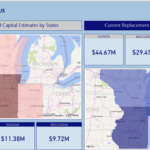Employee Churn Reasons
Understanding the Factors Behind Employee Churn
– Employee churn, also known as employee turnover, refers to the rate at which employees leave an organization and need to be replaced.
– There are several reasons why employees may choose to leave a company, including:
- Lack of growth opportunities: Employees seek professional development and growth prospects within an organization. When these opportunities are limited, they may opt to explore other options.
- Poor work-life balance: Maintaining a healthy work-life balance is crucial for employee satisfaction. If employees feel overworked and unable to achieve a balance, they may consider leaving.
- Inadequate compensation and benefits: Competitive salaries and comprehensive benefits packages are essential for attracting and retaining top talent. Insufficient compensation can be a significant driver of employee churn.
- Unhealthy work environment: A toxic work environment, characterized by conflicts, lack of support, or bullying, can significantly impact employee morale and job satisfaction, leading to churn.
- Limited recognition and rewards: Employees need recognition and rewards for their contributions to feel valued. When these are lacking, employees may feel unappreciated and seek opportunities elsewhere.
References:
Allen, D. G., Bryant, P. C., & Vardaman, J. M. (2010). Retaining talent: Replacing misconceptions with evidence-based strategies. Academy of Management Perspectives, 24(2), 48-64.
Meyer, J. P., & Allen, N. J. (1997). Commitment in the workplace: Theory, research, and application. Sage Publications.
The Consequences of Employee Churn
– Employee churn can have significant implications for organizations, such as:
- Cost implications: The process of recruiting, onboarding, and training new employees can be expensive. High employee churn rates can strain an organization’s financial resources.
- Decreased productivity: Frequent turnover disrupts workflows, affecting productivity and performance. Knowledge and expertise gaps may arise as new employees take time to get up to speed.
- Loss of institutional knowledge: Experienced employees possess valuable institutional knowledge that can be difficult to replace. When they leave, this knowledge is lost, impacting organizational effectiveness.
- Negative impact on morale: High employee churn rates can create a sense of instability and uncertainty among the remaining workforce. This can lead to decreased morale and engagement levels.
- Reputation and employer branding: Consistently high employee churn can damage an organization’s reputation as a desirable employer. It may discourage potential candidates from considering job opportunities within the company.
References:
Cascio, W. F. (2006). The high cost of turnover. Academy of Management Perspectives, 20(3), 5-19.
Hom, P. W., & Griffeth, R. W. (1995). Employee turnover. South-Western College Publishing.
Understanding and Addressing Employee Churn: The Research Process
– Conducting research on employee churn is essential for identifying specific issues within an organization and developing targeted solutions. The research process typically involves:
- Data collection: Gathering relevant data on employee churn, including exit interviews, employee surveys, and performance metrics.
- Analysis: Examining the collected data to identify patterns and trends. This analysis helps to pinpoint the root causes of employee churn.
- Identifying key factors: Through data analysis, researchers can identify the most influential factors contributing to employee churn within the organization.
- Feedback mechanisms: Implementing regular feedback mechanisms, such as engagement surveys, to continuously monitor and address potential issues contributing to churn.
- Collaboration: Involving key stakeholders, such as HR personnel, managers, and employees, in the research process to gain diverse perspectives and insights.
References:
Griffeth, R. W., Hom, P. W., & Gaertner, S. (2000). A meta-analysis of antecedents and correlates of employee turnover: Update, moderator tests, and research implications for the next millennium. Journal of Management, 26(3), 463-488.
Holtom, B. C., Mitchell, T. R., Lee, T. W., & Eberly, M. B. (2008). Turnover and retention research: A glance at the past, a closer review of the present, and a venture into the future. Academy of Management Annals, 2(1), 231-274.
Mitigating Employee Churn: Effective Strategies
– To tackle employee churn, organizations can implement various strategies:
- Improve employee engagement: Foster a positive work environment through open communication, employee recognition programs, and opportunities for growth and development.
- Enhance compensation and benefits: Conduct regular market research to ensure salaries and benefits are competitive and aligned with industry standards.
- Focus on work-life balance: Promote flexible work arrangements and initiatives that support employees in maintaining a healthy work-life balance.
- Strengthen leadership and management: Provide leadership training and support to managers to enhance their ability to motivate and retain employees.
- Emphasize organizational culture and values: Develop a strong organizational culture that aligns with employees’ values and promotes a sense of belonging and purpose.
References:
Saks, A. M., & Gruman, J. A. (2014). What do we really know about employee engagement? Human Resource Development Quarterly, 25(2), 155-182.
Allen, D. G., Weeks, K. P., & Moffitt, K. R. (2005). Turnover intentions and voluntary turnover: The moderating roles of self-monitoring, locus of control, proactive personality, and risk aversion. Journal of Applied Psychology, 90(5), 980-990.





